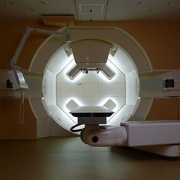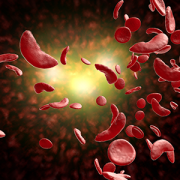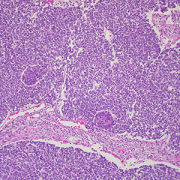New treatment approach shows promise for patients with stage IV Wilms tumor

The study assessed the benefit of adding two additional chemotherapy agents, cyclophosphamide and etoposide, to the treatment regimen for patients with incomplete lung nodule response or tumor loss of heterozygosity (LOH) at chromosomes 1p and 16q, both associated with interior outcomes in previous studies.
Wilms tumor, which first develops in the kidneys, is the fifth most common cancer in children under 15 years old. While overall outcomes for patients with Wilms tumor are excellent, patients with metastatic disease, with the lung as the most common site of spread, fare worse than patients with localized disease. That’s why a new study showing significantly improved survival rates for patients with stage IV Wilms tumors with lung metastases is making waves in the pediatric oncology community.
The study, “Treatment of Stage IV Favorable Histology Wilms Tumor With Lung Metastases: A Report From the Children’s Oncology Group AREN0533 Study” – recently published in the Journal of Clinical Oncology with Jeffrey Dome, M.D., Ph.D., vice president for the Center for Cancer and Blood Disorders at Children’s National Health System, as the senior author – assessed whether lung radiation therapy, part of the standard treatment in combination with chemotherapy drugs, can be avoided for patients with complete lung nodule response after six weeks of chemotherapy. Conversely, the study assessed the benefit of adding two additional chemotherapy agents, cyclophosphamide and etoposide, to the treatment regimen for patients with incomplete lung nodule response or tumor loss of heterozygosity (LOH) at chromosomes 1p and 16q, both associated with interior outcomes in previous studies. The results show that:
- The new approach to therapy resulted in a 4-year overall survival rate of 96 percent, compared to 84 percent on the predecessor study.
- About 40 percent of patients with Wilms tumor and lung metastases can be spared initial upfront lung radiation and still have outstanding survival. This will decrease the long-term risk of heart toxicity and breast cancer.
- Patients with incomplete lung nodule response after six weeks of therapy with cyclophosphamide and etoposide had significantly better 4-year event-free survival: 89 percent compared with 75 percent that was expected based on historical data.
- Intensification of therapy for patients with LOH at 1p and 16q was highly effective: 4-year event-free survival rate improved from 66 percent on the previous study to 100 percent.
“These findings will change clinical practice and improve survival for patients with Wilms tumor whose cancer has spread to the lungs” said Dr. Dome. “The risk-adapted approach to treatment based on tumor biology and tumor response provides a framework for future studies as we come one step closer to achieving 100 percent survival without treatment-associated side effects.”











